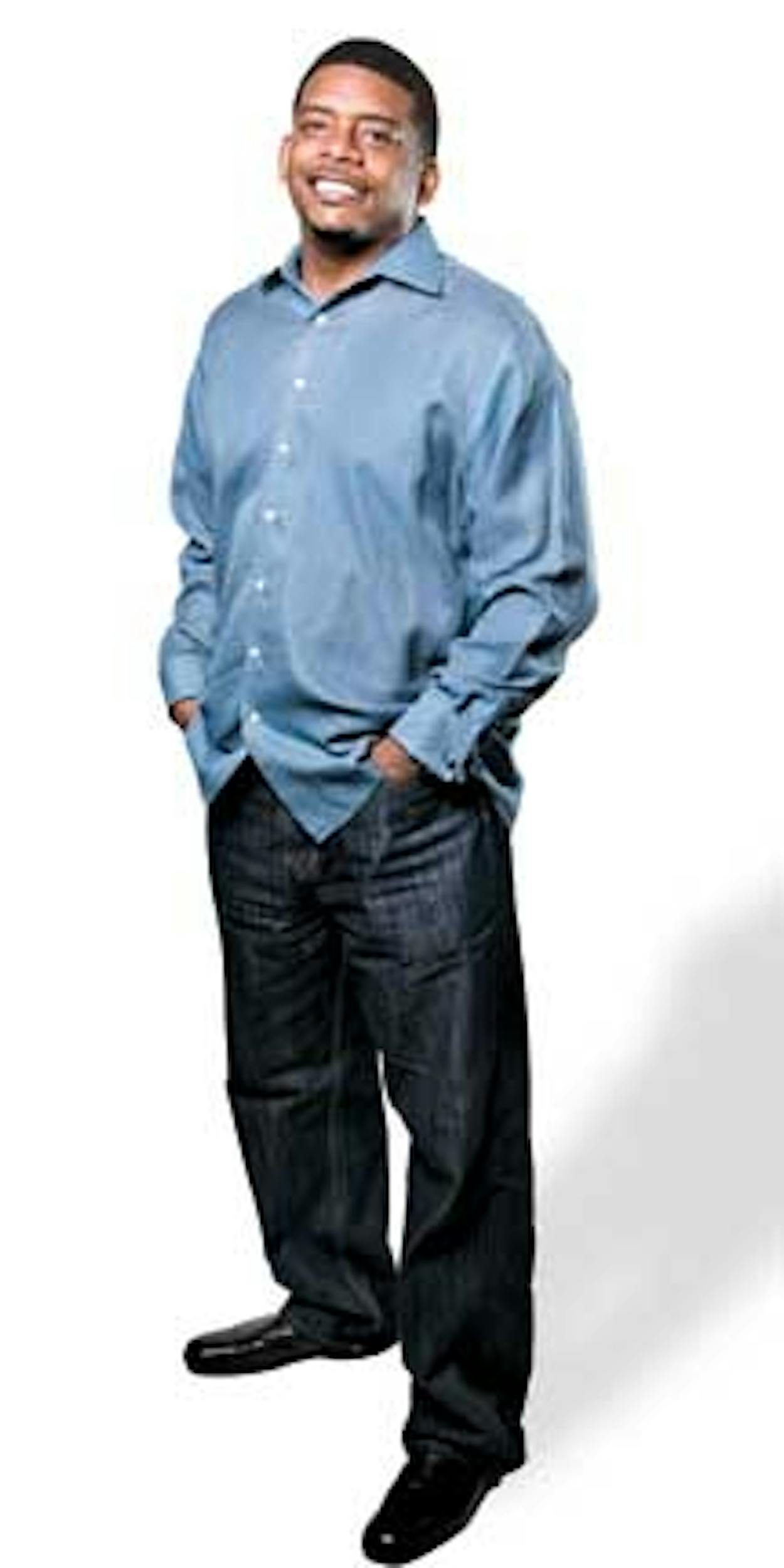NAME: A. Van Jordan | AGE: 43 | HOMETOWN: Austin | QUALIFICATIONS: Has written three volumes of poetry, Rise (2001), MACNOLIA (2004), and Quantum Lyrics (2007) / Received the coveted Whiting Writers’ Award, in 2004 / Teaches in the English department at the University of Texas at Austin
• The image is what comes to mind first. Trying to correlate that image with an emotion is the rest of the process.
• You’re always trying to find the proper container for the content. If I want something to be more elegant, maybe I’ll use a sonnet or a villanelle. For brevity of image and language, maybe an Asian form.
• I spend most of my time researching. I like having search-and-rescue missions, to find erasures from our history and culture. I’m trying to connect historical events to a larger theme of the human condition. It’s a way of putting the work in conversation with the world.
• The first draft is where I am totally uninhibited. I don’t worry about whether it’s sentimental. I don’t worry about the structure. The only thing I’m concerned with is progression toward emotional resonance. And I just allow that to happen.
• I used to think I was a slow writer, but the more I talk to poets, the more I think I’m about average. It takes me about a year to do ten to twelve poems.
• Revising is writing for me. One day I might deal with language. The next day I might deal with structure. Line breaks another time. A couple weeks later I might go back just to fact-check.
• If I’m stuck, I’m usually stuck until something jars me out of it—reading a book, watching a film, going to a museum, falling in love, falling out of love, having someone die.
• The first time that I thought my experience was valid for art was November 15 of ’94, when I saw this poet, Cornelius Eady, give a reading in Washington, D.C. Some people would say, “Oh, well, this guy, he’s a black male poet, and maybe that was the thing that inspired him, seeing another black male poet.” And that was part of it, but it wasn’t all of it. I was familiar with the Harlem Renaissance, but what I heard in Eady’s work—particularly his poem “Gratitude,” that’s his big ars poetica—was an African American blue-collar experience, something I hadn’t heard in poetry before. I grew up in Akron, Ohio. It was like the poem could see into my life.
• You have to think about how language associates within the poem and look for patterns in the images, the metaphors, the setting. You have to think as if you are directing a film— what’s the ambient noise? What’s the sound track? What’s the dialogue? What’s the sound level? What props do you put in the scene?
• The role of the poet has always been to record the culture and history of a people. The thing that’s changed is that there are many more competing ways of recording that. Why put it in a poem? Why not a film or a novel or a blog? For me it has to be because a poem is the highest form of language.







